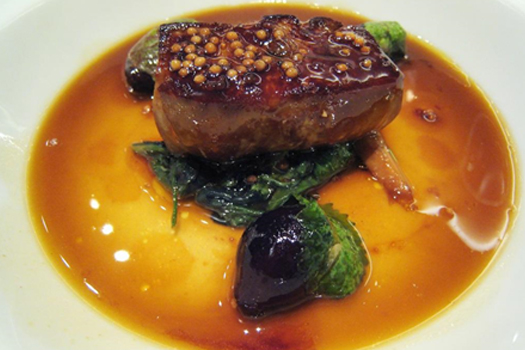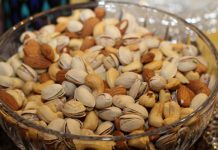Uric acid is the waste product caused by the breakdown of purines; crystalline composites in specific foods. Under natural circumstances, uric acid passes out of the body through urine after filtering from the kidneys. However, purine-rich diet or kidney unable to eliminate uric acid from the body can lead to diseases known as hyperuricemia or chronic gout.
Normally, uric acid results between 3.5 and 7.2 milligrams per decilitre of blood (mg/dL). Some factors triggering elevated uric acid are:
Overconsumption of alcohol
- Inherited
- Diuretics which is water retention relievers
- obesity
- underactive thyroid
- A purine-rich diet including liver, meat, dried beans and peas, mushrooms, etc.
- The disability of the kidneys to purify waste
- Underactive thyroid
Gout is a disease leading to swelling of the joints, specifically feet and the big toe. Its attack usually occurs at night and lasts up to 10 days. Gout is essentially a form of arthritis, most commonly targeting the joints in the big toe. It is caused by an excess of uric acid in the bloodstream. According to a report by The Centre of Disease Control and Prevention (CDC), an estimated 8.3 million of the American population was affected by this disease in the years 2007 and 2008. Bouts of gout attacks can occur randomly at nights, resulting in pain and discomfort in the patient. Gout can be treated with certain medications that are targeted to alleviate the symptoms and the pain, reduce the frequency of attacks, reduce complications, and prevent recurrence of attack. Common medications used for gout attack relief; NSAIDs, corticosteroids, colchicines etc. Their purpose is to reduce the pain associated with gout and treat inflammation as well. You can also make certain lifestyle changes and adopt an anti-gout diet that will help manage the disease.
Gout is of many types;
- Acute gout: It is shorter in duration. This type results in extreme sudden pain (referred to as a “flare” and inflammation.
- Asymptomatic hyperuricemia: this type is characterized by an absence of symptoms. People with increased levels of uric acid may not be aware of this condition, while the urate crystals continue to develop.
- Interval gout: the stage in between the gout attacks or flares.
- Pseudo gout: a condition that appears to have the same symptoms as gout, when it isn’t so.
However, researchers have to lead to the results that patient can cure gout in the foot through a carefully designed diet plan comprising of food good for gout. Here it is important to notify that these diet cannot cure the disease, however it can aid in reducing the shooting uric acid level of the body.
Gout Diet:
The gout diet follows a fundamental healthy diet rule comprising of the following steps:
- Managing weight:
An overweight body can stimulate Gout while losing weight can lower the risk. Studies show that a well-balanced diet with restricted the number of calories ( even if there is no purine check) can be soothing for high uric acid and gout attacks in the body.
- Water:
Keeping yourself hydrated is the key to eliminate uric acid from the body. Water serves in diluting uric acid levels in the blood and inciting the kidneys to dispose of off the waste products through the bladder. The general rule for estimating the water requirement of the body is the number of ounces which is half of your body weight.
- Adjust diet:
For a lower uric acid level in the body, it is significant to adjust your diet in accordance with the health requirement. Cut down your fats such as red meat and fatty dairy products, and opt for lentils, poultry and other means of protein.
- Limited use of fructose:
Fruit juices, sugary good and beverages containing fructose can trigger the uric acid level in the body; consumption of fructose-rich food is a vital risk element of increasing uric acid level in the body.
Furthermore, here is the list of top food, ideal for a lower uric acid level in the blood:
- Apple Cider vinegar:
An apple cider vinegar contains malic acid helping in the breakdown and removal of uric acid from the body. Moreover, apple cider vinegar comprises antioxidant and anti-inflammatory properties. The diagnosed ration is one to three teaspoons of organic apple cider vinegar in eight ounces of water and takes this mixture two to three times a day.
- Cherries:
Cherries hold a dominant position in the list of food lowering uric acid, carrying compounds naming bioflavonoids, proanthocyanidins, and anthocyanin. A journal Arthritis Rheumatism published in 2012, portrays the discovery by the researchers that cherry intake reduces gout attacks by 35 percent in 633 people with gout.
- Parsley:
Quercetin and kaempferol, in parsley, can reduce the uric acid level. Serving as a natural diuretic, it aid in excreting excess uric acid. An Iranian Journal on Pharmaceutical Research published in 2011 depicts quercetin and kaempferol can lessen uric acid levels in hyperuricemic rats. The bioflavonoid flavone in parsley named apigenin also lower uric acid levels. Apigenin can restrain the enzyme xanthine oxidase, capable for reformation of purines to uric acid.
- Olive oil:
A perfect substitute for no steroidal anti-inflammatory drugs (NSAIDs) is olive oil famous for maintaining the uric acid level. This vitamin E rich food is exceptional for uric acid; however, avoid deep frying as it’s a strict no for gout patients.
For the last note, this food can help in reducing the issue. However, in case of emergency, you can always seek professional help and medication.


















